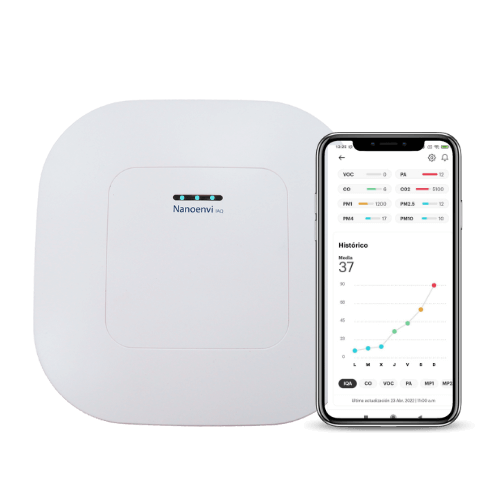IVF in vitro fertilisation laboratories, as well as Andrology and Cryopreservation laboratories, are assisted human reproduction laboratories (AHRLs) in which activities related to gametes or pre-embryos are carried out with the aim of facilitating assisted reproduction.
Laboratory work must be carried out under good conditions, but the complexity of some of the techniques applied in these laboratories makes certain controls and improvements indispensable to ensure success.
For example, during in vitro culture, gametes and embryos can be exposed to a series of artificial situations such as temperature and external substances that must be controlled as they can affect embryo development.
One of the parameters that must be controlled because of the possibility of containing embryotoxic compounds are volatile organic compounds (VOCs).
What are the Organic Volatile Compounds?
Volatile organic compounds or VOCs are all those light hydrocarbons that are gaseous at normal ambient temperature or which are highly volatile at normal ambient temperature.
There are more than a thousand compounds that can be considered VOCs, but the most abundant are methane, ethane, propane, n-butane, n-pentane, benzene, toluene, xylene and ethylene.
Volatile organic compounds can have both natural and human-derived origins, such as the use of organic solvents, burning of fuels, transport and even tobacco smoke. They can also be found in personal hygiene products, cosmetics, paints, plastics, etc.
According to their hazardousness, they are classified into 3 groups depending on the degree of damage they can cause to health and the environment. The toxic properties of VOCs will depend on the individual compound and the conditions of exposure.
Monitoring air quality in assisted reproduction laboratories according to UNE 171340:2020
As we have seen above, measuring air quality in in vitro fertilisation (IVF), andrology and cryopreservation laboratories is critical and will depend not only on external filtration but also on the laboratory itself.
According to UNE171340:2020 Annex B, special attention must be paid to, among other parameters, VOCs, temperature, relative humidity, mesophilic aerobes, moulds and yeasts.
In addition, and according to the Cairo Consensus and its guide of recommendations for embryo culture, experts indicate that critical parameters that affect laboratory equipment and infrastructure, such as VOC levels, temperature, humidity and CO2, should be continuously monitored.
Maintaining correct temperature and relative humidity in the laboratory during handling as well as during culture is essential and fluctuations should be avoided at all costs.
Likewise, exposure to particulate matter from dust, glass scraps, plastic shavings provides a perfect vehicle for the transport of pathogens such as moulds, yeasts and mesophilic aerobic bacteria, so it is important to monitor the level of PM10 and PM 2.5 particles.
With regard to VOCs, the measurement and control of volatile organic compounds (VOCs) is crucial in this type of room, as these are compounds that are highly volatile at room temperature (hydrocarbons, alcohols, aldehydes, ketones, esters, halogenated compounds, etc.), which can have embryotoxic effects and cause implantation failure.
Therefore, continuous monitoring in laboratories at various levels is essential, e.g:
- Levels of volatile organic compounds VOCs in the laboratory.
- Levels of particulate matter present.
- Temperature and relative humidity levels that may favour the growth of mesophilic aerobes or moulds and yeasts.
- CO2 levels resulting from the use of cryogenics.
In short, it is critical to measure the indoor air quality of the laboratory.
Given the difficulty of adapting filtration systems for the control of particles, micro-organisms and VOCs in existing laboratories, the use of monitoring measures is essential to avoid taking risks.
Volatile Organic Compound sensor Nanoenvi IAQ
Being able to monitor volatile organic compounds in andrology, IVF embryology and cryopreservation laboratories ensures that effective preventive measures can be taken in a timely manner.
And if the monitoring is done in real time with a multiparameter voc sensor with alert system, the possibility of compromising biological material is reduced to a minimum.
Nanoenvi IAQ is an indoor air quality sensor that guarantees the correct monitoring of temperature, relative humidity, particulate matter, CO2 and VOCs as specified in the UNE 171340 Annex B standard on the validation and qualification of controlled environment rooms in assisted human reproduction laboratories.





It has a multi-device data platform that analyses the data in real time, displays a history and helps to identify potential risks in relation to critical parameters so that it issues alerts when air quality does not meet any of the set parameters.
Nanoenvi IAQ is definitely the perfect device for air quality monitoring in assisted reproduction laboratories.











